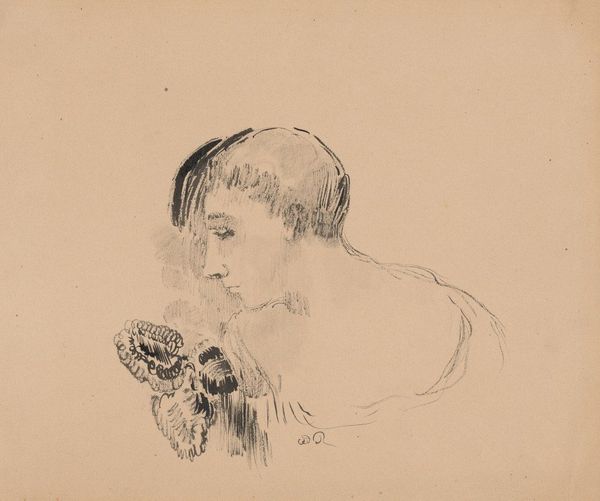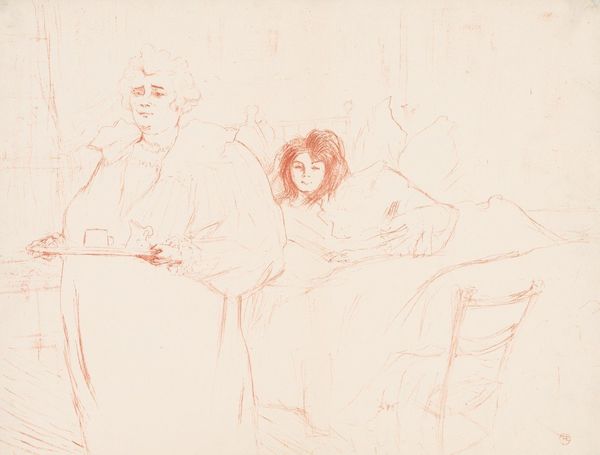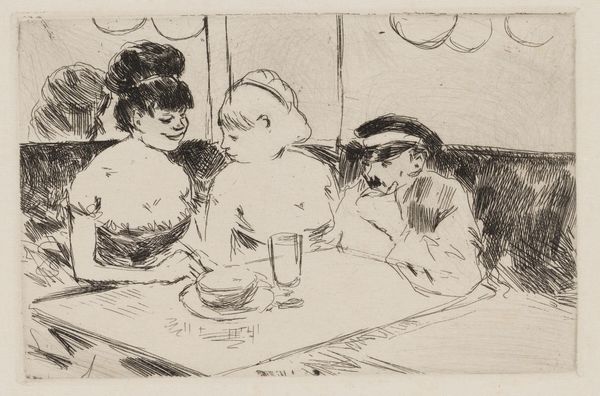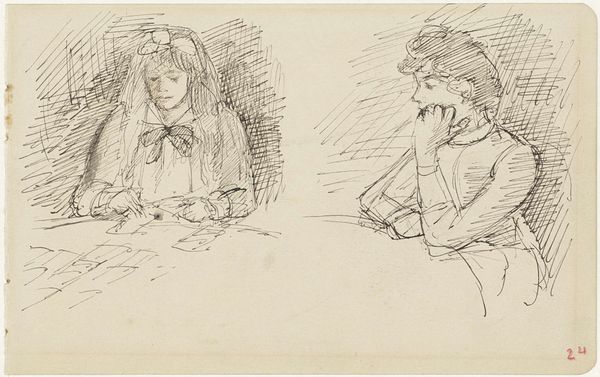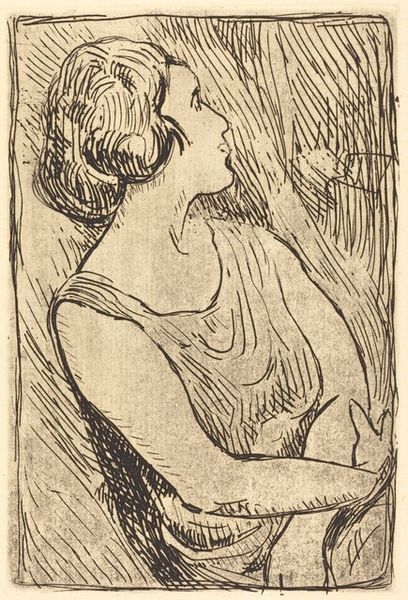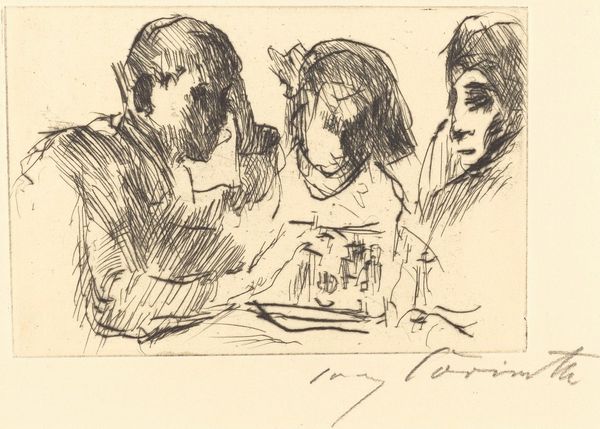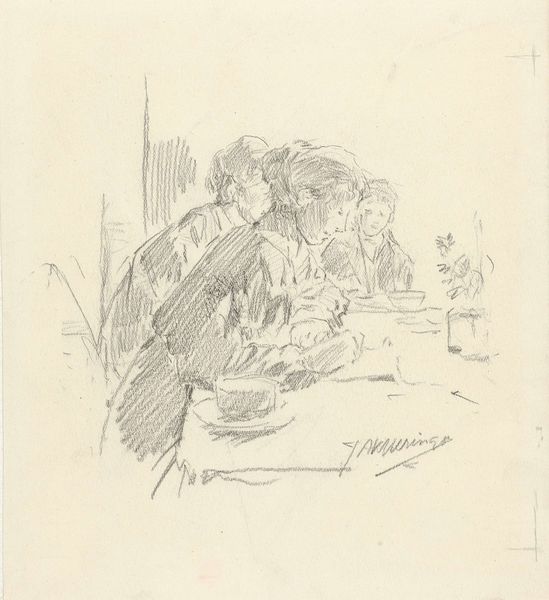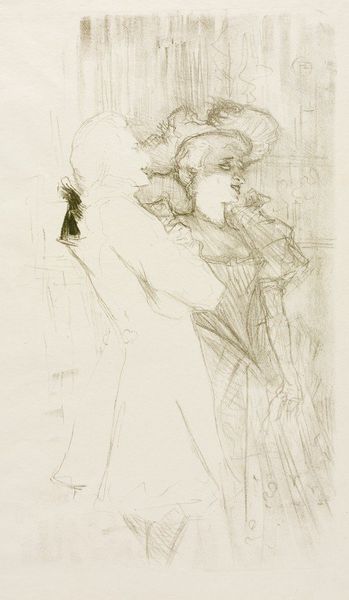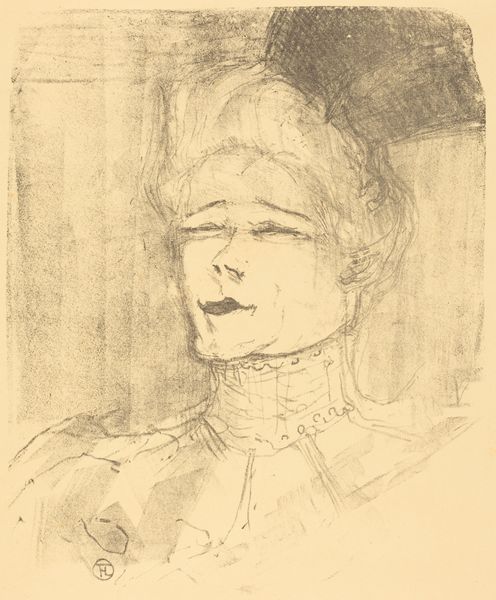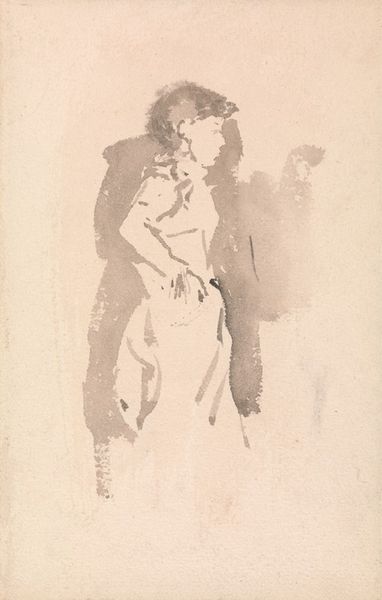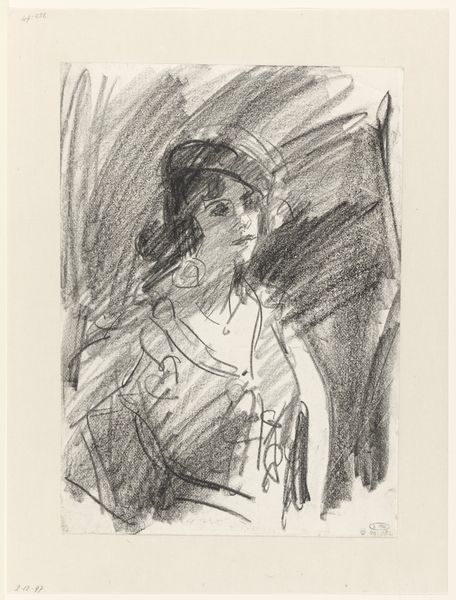
Berthe in a Cafe, Boulevard Sebastopol (Berthe dans un cafe, Boulevard Sebastopol) c. 1927 - 1929
0:00
0:00
Copyright: National Gallery of Art: CC0 1.0
Editor: Here we have André Dunoyer de Segonzac's "Berthe in a Café, Boulevard Sebastopol," made with ink drawing and print around 1927-1929. There's such a somber feeling to the image of the woman in the café. What do you see in this piece? Curator: Beyond the melancholy, I see a representation of female subjectivity during the interwar period. Consider the cafe: a space increasingly accessible to women, yet still a site of potential alienation. Do you notice how the woman's gaze is directed away from us, almost internal? Editor: Yes, it's like she's lost in thought. Curator: Precisely. Segonzac captures a sense of modern detachment. Her isolation also resonates with broader societal anxieties of the time. Remember, this was a period of significant social and political upheaval, with women navigating changing roles. Editor: So her solitude could reflect the challenges women faced even with new freedoms? Curator: Exactly. And look at the composition – the starkness of the lines, the limited use of detail. Segonzac may have employed these visual elements to underline the emotional starkness, a world rendered fragile after the war. Do you see other ways the setting contributes to this portrayal? Editor: Now that you mention it, the single glass also amplifies her loneliness. It’s like a symbol of the social isolation people felt even when surrounded by others in a city. Curator: Well observed. Perhaps, understanding this work provides an avenue to reflecting on the continuing tension between individual experiences and larger societal narratives. Editor: It’s amazing how a simple drawing can hold such complex ideas about the shifting roles of women and the mood of an era.
Comments
No comments
Be the first to comment and join the conversation on the ultimate creative platform.
